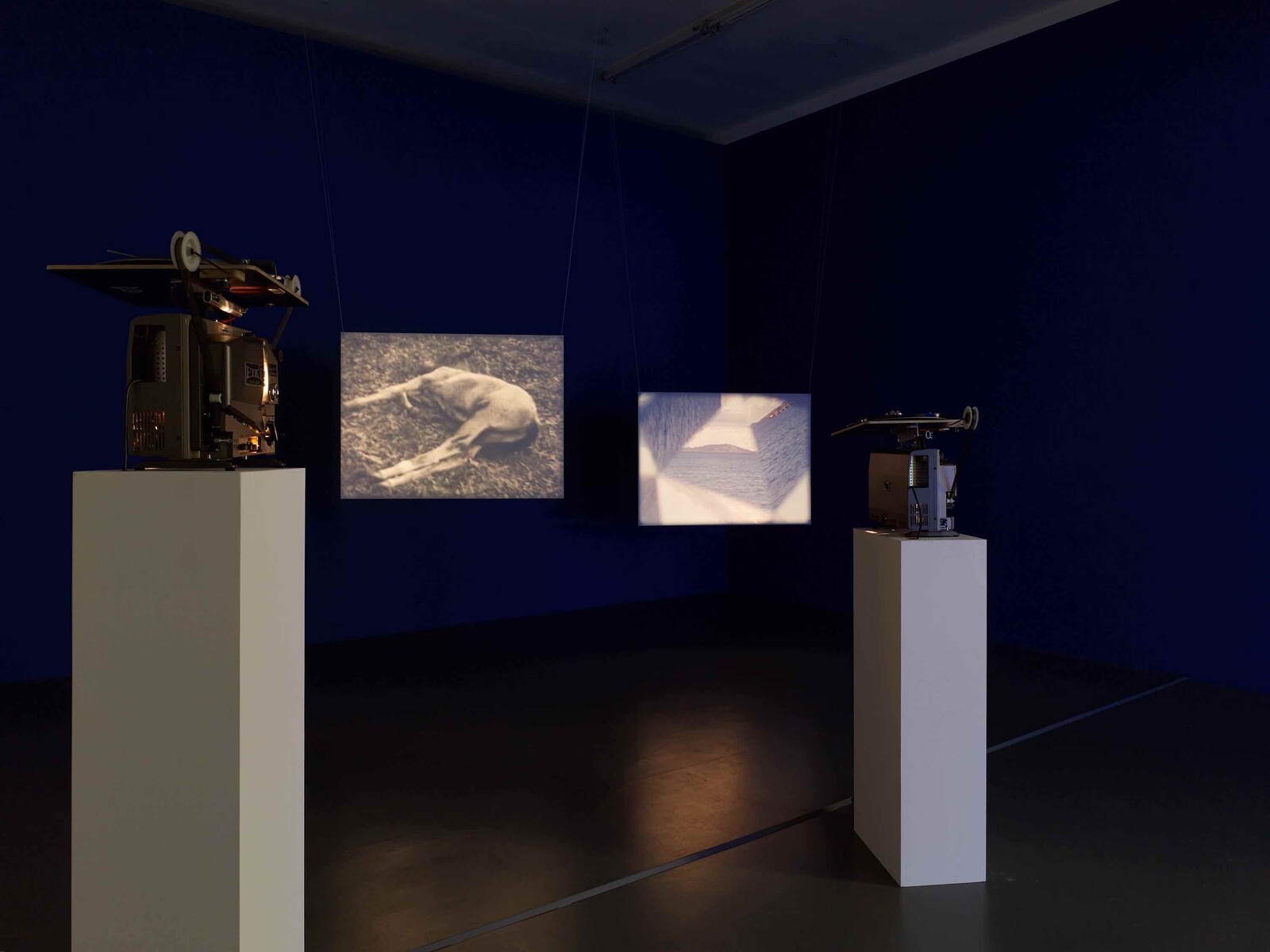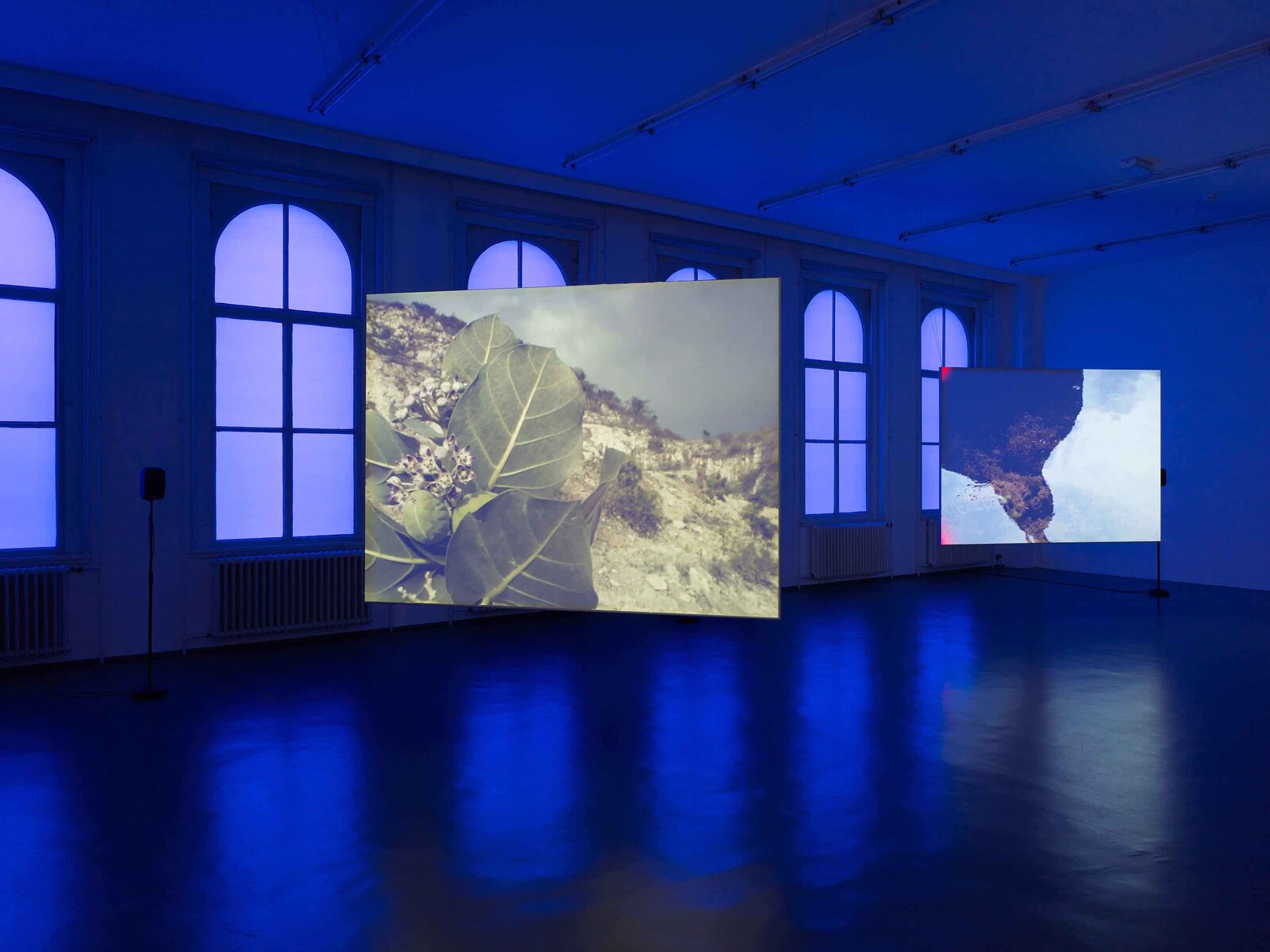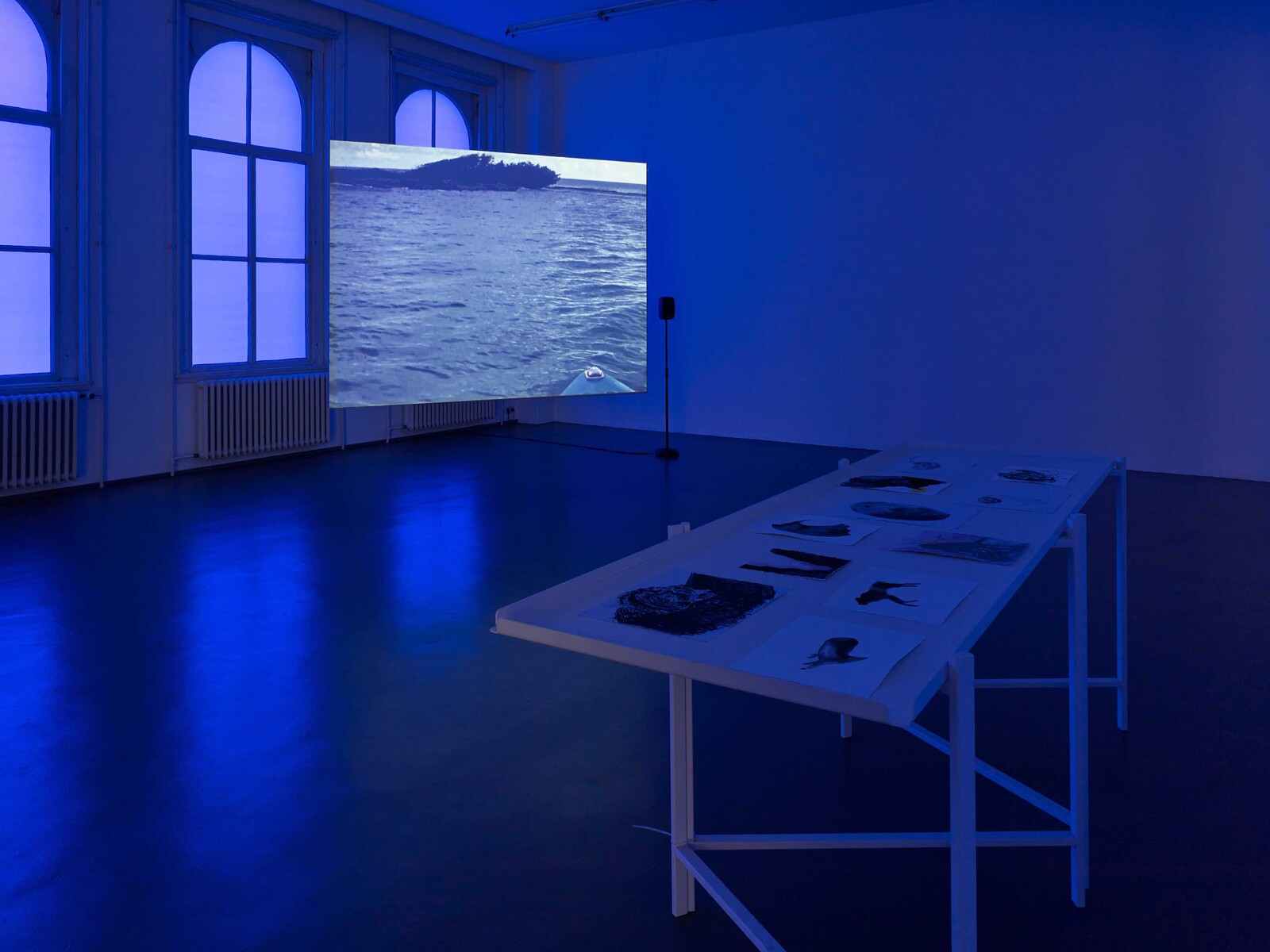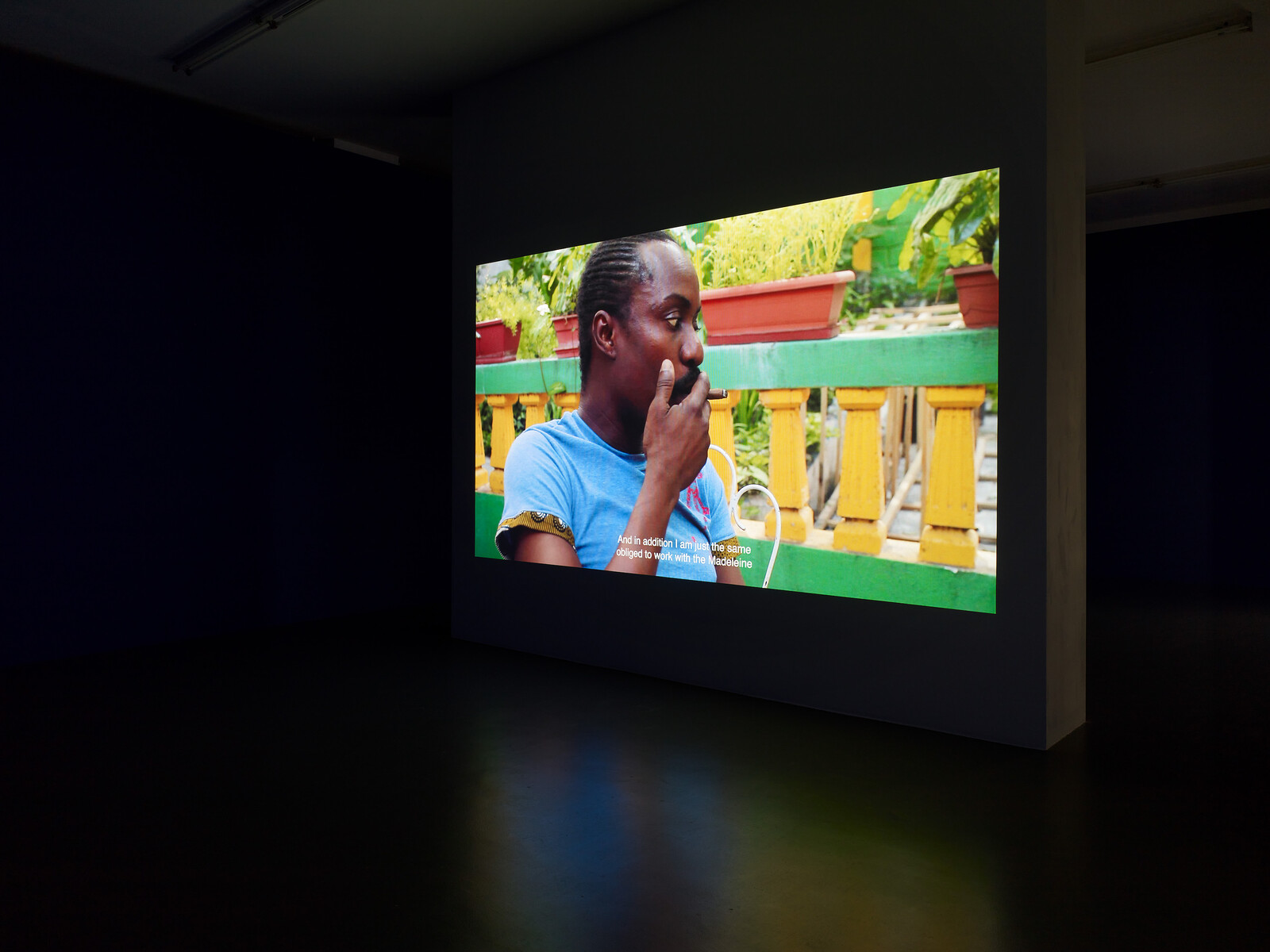Watching Beatriz Santiago Muñoz’s silent 16mm film Otros usos [Other uses] (2014) is like looking into a kaleidoscope made with old snapshots too nondescript to make it into an album but nonetheless strangely fascinating. A composite image of four shots of a tranquil sea, each aligned to the edges of the frame, spins in a circle. As they oscillate, the distant shoreline in each shot tilts and merges with the next. The anachronistic sound of the projector, installed on a pedestal in the gallery, combines with the faint heat produced by the machine to heighten the body’s senses, like the effect of ASMR. I feel that Muñoz wants me, the viewer, to feel disoriented, employing a combination of the images’ banality and their movement to lull me into a dream state. They want to suspend my desire for narrative resolution and a fixed horizon.
Both Otros usos and another silent 16mm film projected beside it, Black Beach/Horse/Camp/The Dead/Forces (2016) do have a precise physical referent: the island of Vieques in the Caribbean near Puerto Rico that the US Navy used as a bombing range and a training ground for over sixty years. In Otros usos, Muñoz’s carefully folded image is shot from the end of a massive dock built in the 1940s to service US battleships that extends a mile and a half into the water. Both films also have a specific aesthetico-political ambition: to depict Vieques in a manner that “will not reproduce the ideology of military ruin,” according to the artist’s statement on the wall label. The other half of the installation, Black Beach/Horse/Camp/The Dead/Forces, takes that ambition off the dock and into the island’s landscapes. It is made of visual anecdotes, such as one in which Muñoz films a man in the shallows. The shot cuts so close to his body that the space of Vieques is rendered as purposeful, circular movement through water near sand.
The mesmerizing quality of the footage notwithstanding, I find it difficult to relinquish narrative, specifically in the aftermath of US military occupation. I want to know what kind of toxicity is being expelled from Vieques. Muñoz’s work turns away from this desire. “We were no longer ‘inside the base,’” Muñoz explains in the same wall text, “but, rather, next to the cotton grove by the left-over motors.” They turn from a representation of the space as one that exists after the fall of a military occupation and towards a less linear, less rational representation of the spatio-temporal work of repair.
A newer work, El cuervo, la fosa y la yegua [The raven, the trench, and the mare] (2021), is projected alone in an adjacent gallery. It pulls together underwater footage from the Puerto Rico Trench, the deepest point in the Atlantic Ocean, with ethnographic sequences of a woman working by firelight, marking an interior dirt floor with flour to form a vèvè, a beacon drawn to orient the spirits during a Vodun ritual. These fragments taken from disparate filmic languages intersect with only the voiceover track of Italian physicist Carlo Rovelli’s reflections on time to maintain narrative continuity. Footage shot over the woman’s shoulder as she holds a candle in one hand and unfurls the flour in a line on the dirt floor with the other is abruptly cut to a shot of an abstract indigo stain spreading through a milky volume, presumably in the deep ocean. In each, the penetration of some dimension by another is suggested. When the shot changes back to show the woman at work, it takes a moment to register that the film is reversed; now her gestures gather the flour back up off the floor and into a shallow bowl, erasing the image as she works. In either temporal direction, she could be wiping a countertop or rolling out dough; her movements are that practiced and straightforward.
The small sensory fragments accumulate: El cuervo, la fosa y la yegua also contains sun-drenched scenes of Haitian playwright Guy Régis Junior speaking about his translation into Kréole of Marcel Proust’s À la recherche du temps perdu [In search of lost time] (1913) and a gorgeous shot of a dappled mare grazing near an abandoned Corvette. The smooth body of the young mare fills the projection screen as she selects grass, stalks, and scratches herself near a leaning pile of disassembled car doors. These images engage the senses more than either the 16mm films or The point upon which it turns (2022), a two-channel video installation projected on hanging screens in a third gallery space, which presents a bifurcated filmic portrait of geologic time in Puerto Rico’s Lajas Valley. But common among all three installations is the presentation of physical beauty as something ordinary, unspectacular; time and space shift and merge around unremarkable aesthetic gestures.
I tried to read Proust’s examination of the structure of memory half-heartedly once, twenty years ago in the desert to distract myself from a girl. At the time, I was too young to tolerate the suspension of desire required to understand it. I look for it now to anchor this reading of Muñoz’s oneiric montages, and find a passage quoted in a long analytical text about the impossibility of distinguishing individuals from their collective sensorial effect: “And this want, in my vision, of the demarcations which I should presently establish between them permeated the group with a sort of shimmering harmony, the continuous transmutation of a fluid, collective, and mobile beauty.”1
Marcel Proust quoted in Mieke Bal, “Reflection: Memory and Storytelling in Proust,” in Dmitri Nikulin (ed.), Memory: a history (New York: Oxford University Press, 2015), 223.






